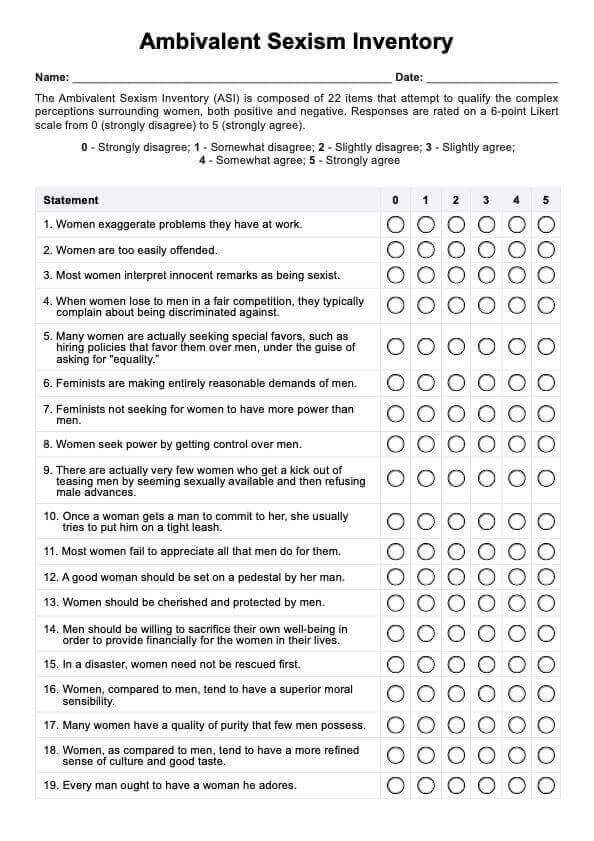Glick and Fiske's Ambivalent Sexism Inventory (ASI), developed in 1996, is a psychological tool used to measure sexist attitudes, dividing them into hostile and benevolent sexism.

Ambivalent Sexism Inventory (ASI)
Explore the Ambivalent Sexism Inventory (ASI) to understand and assess both hostile and benevolent sexist attitudes, crucial for improving gender relations.
Ambivalent Sexism Inventory (ASI) Template
Commonly asked questions
The ambivalent sexism theory framework consists of two components: benevolent and hostile sexism. Hostile sexism reflects negative attitudes toward women, while benevolent sexism reflects seemingly positive but patronizing attitudes toward women.
Hostile sexism involves overtly negative beliefs about women, while benevolent sexism involves seemingly positive beliefs that reinforce traditional gender roles and can still be harmful. Benevolent sexism involves protective paternalism, complementary gender differences, and beliefs about heterosexual intimacy.
EHR and practice management software
Get started for free
*No credit card required
Free
$0/usd
Unlimited clients
Telehealth
1GB of storage
Client portal text
Automated billing and online payments











